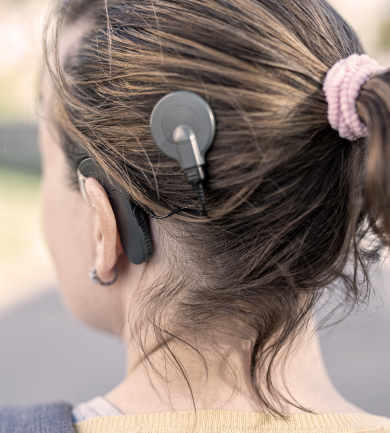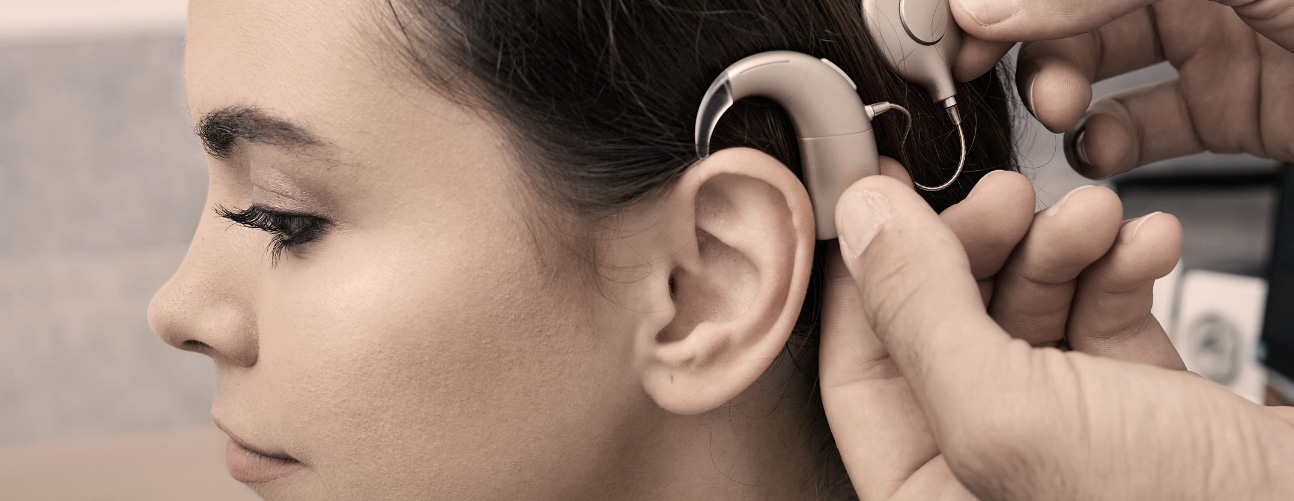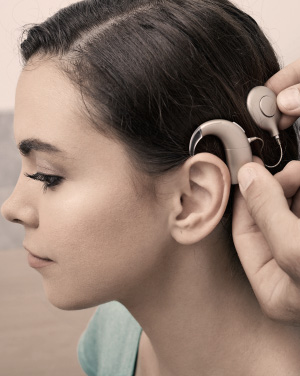

Cochlear Implants
A cochlear implant is an extremely sophisticated electronic device that enables children or adults with severe or profound bilateral deafness to regain their hearing by implanting an electrode in the inner ear and an external box that converts the surrounding sound information into electrical impulses.
But what exactly is a cochlear implant?
The cochlear implant works in a fairly complex way, but it can be summarised as follows:
- The external part picks up surrounding sounds using a microphone and transforms them into electrical signals using a processor. These signals are then transmitted to the internal part of the implant via an antenna, which is magnetised through the skin to the internal part of the implant.
- The inner part of the implant, inserted under the skin, transmits the electrical impulses to the hair cells of the inner ear via an electrode inserted into the cochlea. This auditory signal is transported to the auditory areas of the brain via the auditory nerve and the central auditory pathways of the brainstem and brain.


Who should have a cochlear implant?
A cochlear implant is primarily intended for people with profound or severe hearing loss in both ears, for whom conventional hearing aids are not sufficiently effective. It can be used in adults, but also in children from the age of 12 months. More recently, its indications have been extended to certain patients with unilateral profound deafness and incapacitating tinnitus.
Pre-implant assessment
The decision to implant a cochlear implant requires a careful hearing assessment using subjective hearing tests (in particular free-field speech audiometry, with and without a hearing aid) and objective hearing tests to assess the condition of the hair cells in the inner ear and the auditory nerve.
This assessment is completed by an evaluation of the balance function and full imaging of the inner ear.
The advantages of cochlear implants
First of all, it is important to remember that cochlear implants are the only technique currently available to restore hearing to people with severe or profound hearing loss who have failed conventional hearing aids.
For these people, the cochlear implant does not restore normal hearing, but it does enable a significant improvement in sound perception and understanding in most cases. This necessarily requires specialised auditory therapy after implantation, in order to learn how to interpret the new sounds perceived.
Progress in cochlear implantation
In recent years, medical research has led to a number of advances in cochlear implantation:
The combination of implants and drugs. The latter, released over the long term by the implant in the inner ear, reduce the progressive destruction of residual sensory cells by the inflammation caused by a foreign body.
Improved pre- and post-operative radiological analysis of the anatomy of the inner ear, enabling better positioning of the electrodes.
The advent of new electrode insertion techniques that are less traumatic for the inner ear.
The OtoneuroMonaco team is qualified to carry out pre-implant assessments and works in a network with cochlear implant centres in France and abroad. Its medical team also includes one of the world’s leading specialists in this field, Professor Thomas Lenarz (Hanover Medical School).
